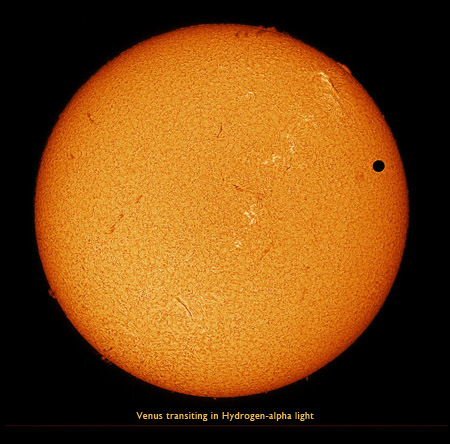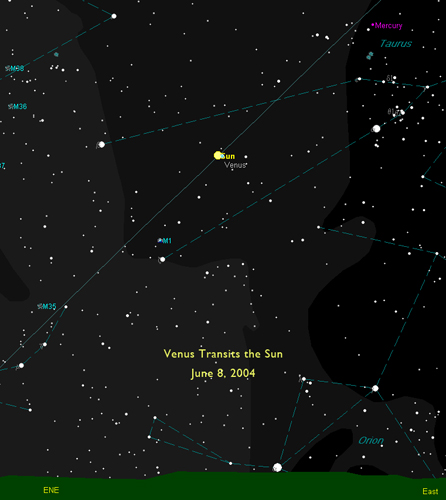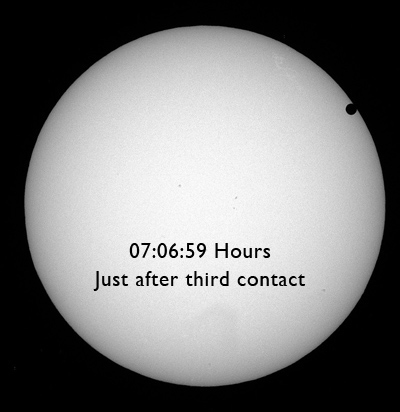The ST-2000 was ready and George and Paul final checked the Maxim DL computer set up to make certain everything was prepared to start the sequence shooting with the red filter.
Once this was checked the computer/camera combination took over and we started to compile images. I was watching the information dialog box to make certain the pixels didn’t
over saturate and create an overexposure. Over the course of the next several hours this was corrected on several occasions and we had to re-center the telescope due to
refraction as the Sun broke out over the horizon. As the Sun got higher changing the exposure time became more frequent to the point where several sections of cardboard
were hastily put together to form a mask to limit the amount of light entering the OTA. We increased the exposure times as third contact was imminent hoping to catch any
‘black drop’ effect should the camera pick it up. Before the end of the transit, 159 exposures were logged from this camera. We continued to monitor the event visually
through the FS-78 and all agreed this was a really enjoyable experience.
George Bokinsky was shooting film through his Nikon camera all the while. I’m not certain how many shots he exposed but he finished the roll and was thinking about
packing up and heading to the office to commence his work day. Speaking with him and what he’s planning on doing to set up and imaging system was interesting and
we found him to be great company and a welcome addition to our group. Don’t be surprised to find that George becomes and avid imager before it’s all said and done…
The transit finally ended and we milled about getting ready to break down the equipment and head off to work or whatever. Were we successful? Well, I’d say we were.
Take a look at the two finals on this page processed from the many images we shot that morning. Here is a larger view if you care to look, the first was with the ST-2000 and a Baader filter:
Transit in White Light
The second, processed and enhanced by Paul, is (in my humble view) magnificent: Transit in
Hydrogen-alpha.
Things worked out better than we could ever have anticipated. Thanks to Joan and the last minute selection of the site,
we later found we were one of the few groups in Maine to actually view (or image) this event. Of the ASNNE members in the field for the transit,
we were the only group that was successful, everyone else had either fog or cloud cover that completely obscured the event.
It just goes to show that with all the astronomical disappointments one may have, and you can trust I’ve had plenty, sometimes things just work out right…
|

|


